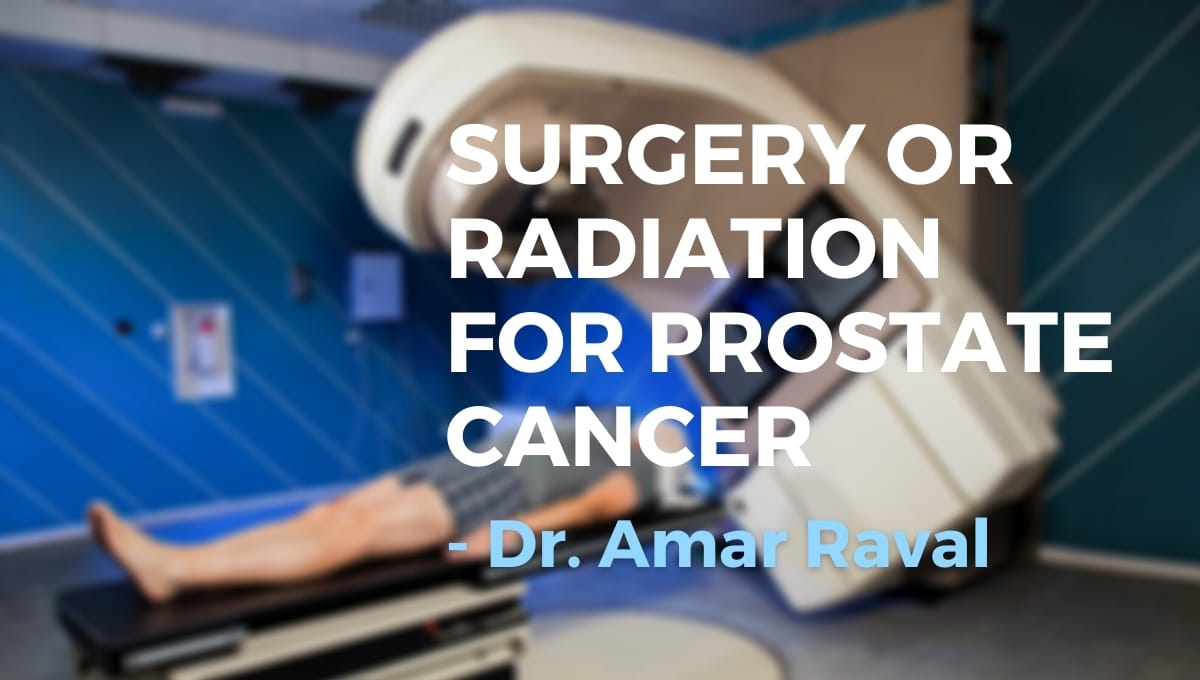KEY TAKEAWAYS:
- Surgery and radiation therapy are two common treatment options for prostate cancer, each with its own set of benefits and drawbacks.
- Dr. Raval often recommends radiation therapy for older patients or those with medical comorbidities that may limit their ability to undergo surgery successfully.
- Dr. Amar J. Raval, MD, is a urologist in Tampa, FL, and a member of the Advanced Urology Institute, the largest urology practice in Florida.
Dr. Amar J. Raval and the Decision-Making Process for Prostate Cancer Treatment
Amar J. Raval, MD, is a urologist in Tampa, FL, specializing in the diagnosis and treatment of prostate cancer. With a range of treatment options available, deciding between surgery and radiation can be a challenging process for patients. In this article, we explore Dr. Raval’s insights and recommendations for making this important decision.
Surgery vs. Radiation: Weighing the Options
When it comes to treating prostate cancer, surgery and radiation are two of the most common treatment options. Each method has its own set of benefits and drawbacks, making it crucial for patients to carefully consider their individual needs and circumstances before making a decision.
Surgery: The Benefits and Drawbacks
Surgery, specifically radical prostatectomy, involves the complete removal of the prostate gland and surrounding tissues. While surgery can be an effective option for treating prostate cancer, it is an invasive procedure that carries its own set of potential complications. These may include infection, bleeding, and urinary incontinence, among others.
Dr. Raval emphasizes that surgery is not without risks, and patients should be aware of these when weighing their options. However, for some patients, surgery can offer the best chance for long-term cancer control.
Radiation: A Suitable Option for Older Patients or Those with Medical Comorbidities
Radiation therapy, on the other hand, involves the use of high-energy X-rays or particles to kill cancer cells within the prostate. Dr. Raval often recommends radiation therapy for older patients or those with other medical conditions that may limit their ability to undergo surgery successfully.
Although radiation therapy can be a less invasive alternative to surgery, it is not without potential side effects, such as urinary and bowel issues or erectile dysfunction. However, for some patients, radiation therapy may provide a more suitable option given their overall health and age.
The Importance of Patient Autonomy in Treatment Decisions
While Dr. Raval provides his expert opinion and guidance during the decision-making process, he ultimately leaves the choice of treatment up to the patient. Each individual’s unique circumstances, preferences, and values must be taken into account when determining the best course of action for treating prostate cancer.
Dr. Amar Raval at Advanced Urology Institute
Dr. Amar J. Raval is a skilled urologist in Tampa, FL, who is dedicated to providing the best possible care for his patients. As a member of the Advanced Urology Institute, the largest urology practice in Florida, Dr. Raval works alongside a team of experienced urologists who share his commitment to excellence in patient care.
By offering comprehensive treatment options and personalized guidance for patients with prostate cancer, the Advanced Urology Institute ensures that their patients receive the most advanced and effective treatments available in the field of urology.
TRANSCRIPTION:
My name is Amar J. Raval and I’m with Advanced Urology Institute. You know surgery is surgery at the end of the day and it does have its own complications and you’re you know making incisions. With radiation I like to give it to patients who are older who want treatment and also have medical comorbidities or different things that may limit them from being successful from a surgical outcome. But I think it’s again it’s a big conversation to have and ultimately I you know give my thoughts but I leave it up to patients to decide what they want to do.
REFERENCES:
- “Surgery or Radiation Therapy for Prostate Cancer: How to Decide.” 10 May. 2021, https://www.cancercenter.com/community/blog/2021/05/how-to-decide-between-radiation-or-surgery-for-prostate-cancer.
- “How Is Prostate Cancer Treated? | CDC.” https://www.cdc.gov/cancer/prostate/basic_info/treatment.htm.
- “Radiation Therapy for Prostate Cancer – American Cancer Society.” https://www.cancer.org/cancer/prostate-cancer/treating/radiation-therapy.html.


